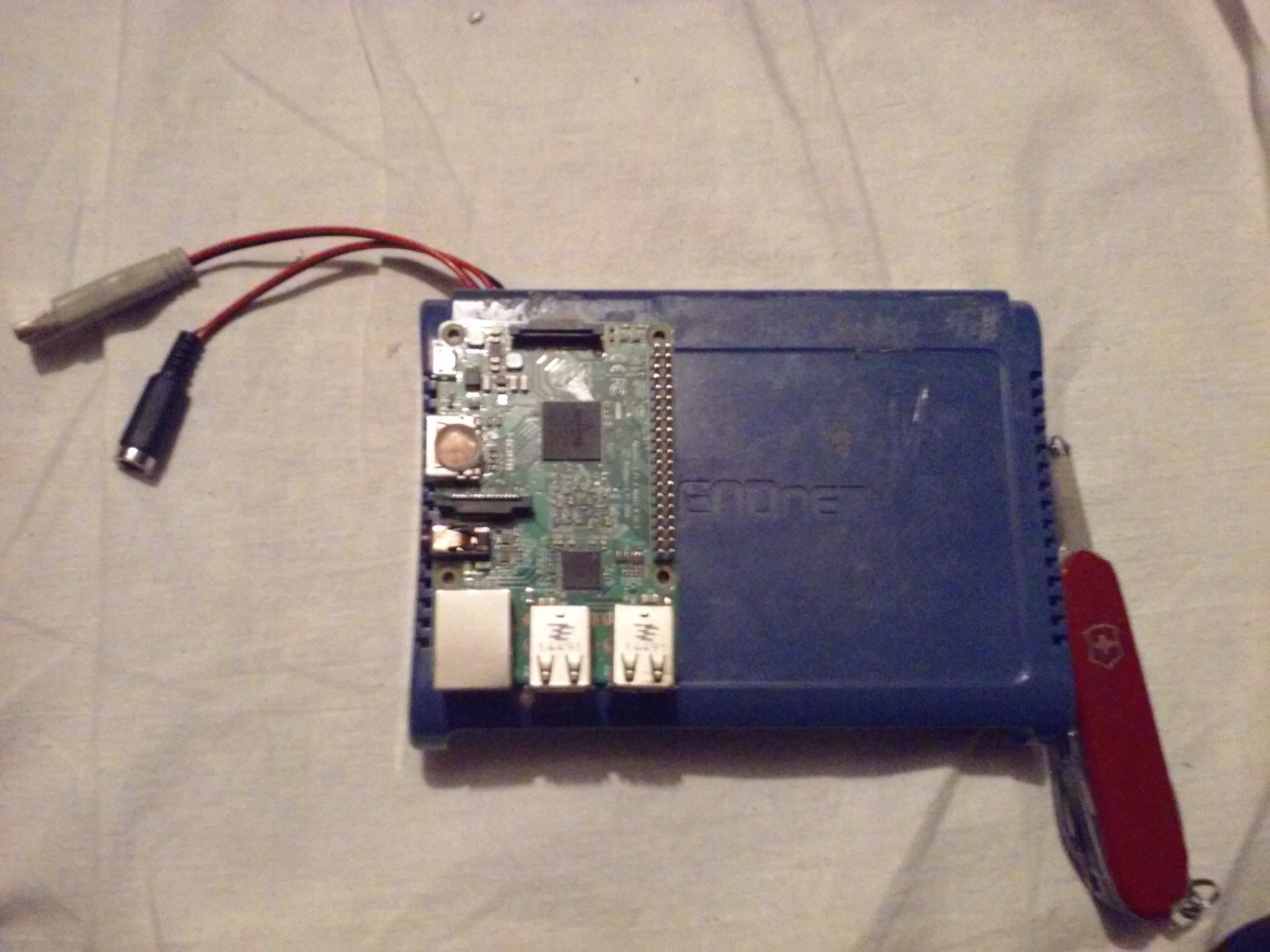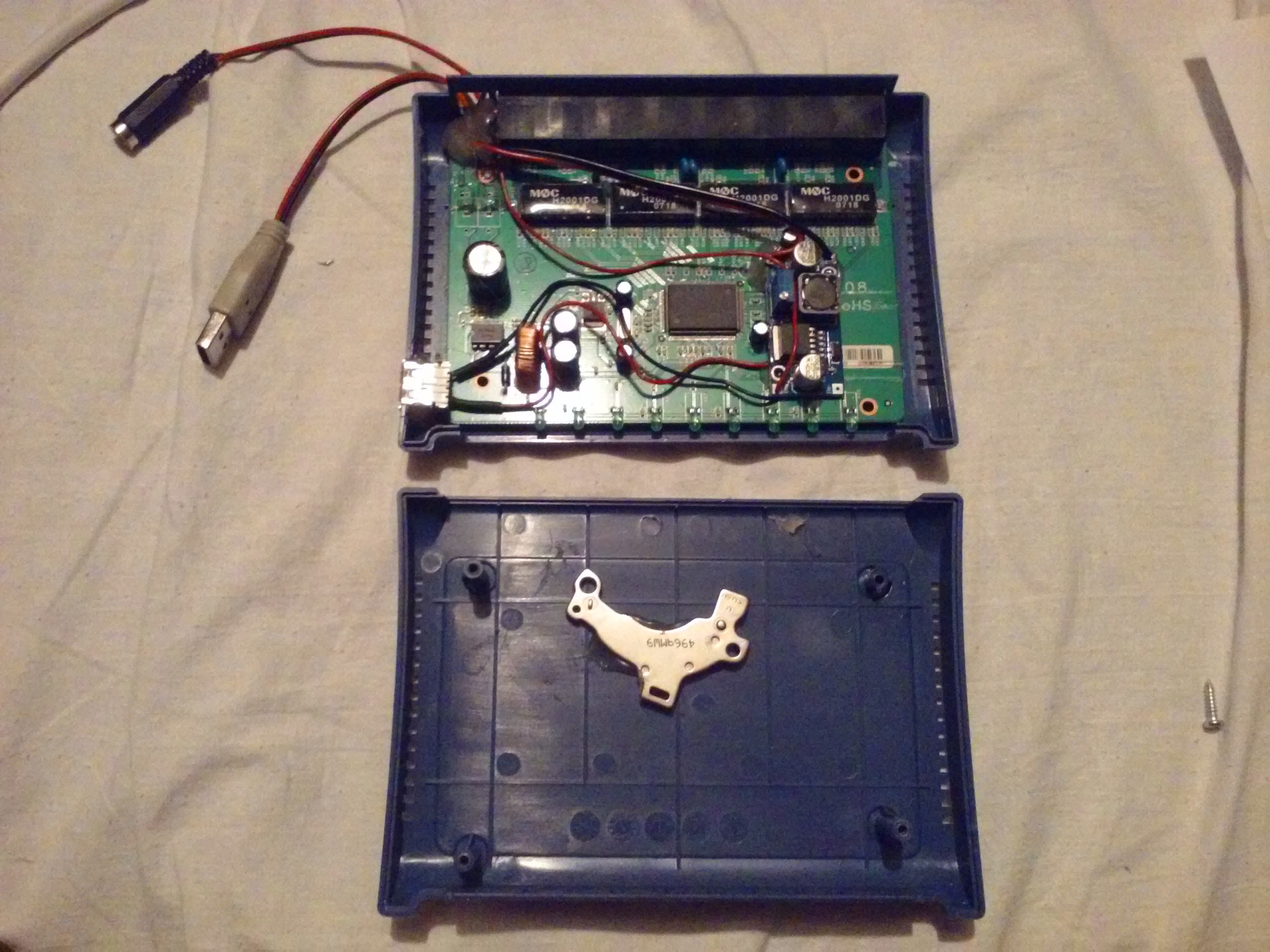Sometimes I need to set up a little network infrastructure to connect a multitude of devices to a network. I also can't be picky about PSUs, as I can get either a barrel jack one or a simple USB socket from my computer. Also, I need something to power all those Raspberry Pi boards I sometimes need to experiment on, and given all the environmental constraints (that is, in some places where I work there aren't enough wall sockets) one USB port with enough power makes all the difference. With that in mind, I've took a 8-port network switch I've been using for ages and repurposed it a little.
 Network switch in question needs 5V. In its first revision, I used a LM7805. However, this proved to be unviable because the thing would heat up a lot from 12V, even with a heatsink.
Network switch in question needs 5V. In its first revision, I used a LM7805. However, this proved to be unviable because the thing would heat up a lot from 12V, even with a heatsink.
So, I turned to one of those fake-LM2596 DC-DC modules eBay is offering, and they're pretty decent compared to linear regulators in terms of efficiency. That worked, and worked pretty well, but these regulators are capable of more and I wasn't tapping into that capability. So I added a USB port which could provide 5V at enough amps to charge/power things. The switch both has a USB cord tapped into the 5V line and a 5.5/2.5 barrel jack connection which is connected to the DC-DC Vin.

- This switch has a magnet glued to the top lid. It's mainly for attaching it to metal surfaces, since I've actually needed that a couple of times, like attaching the switch to an underside of a table.
- It can also backpower a Raspberry Pi A/B (not + or 2) using the 5V USB plug it normally would use to power itself - that is, if I use the barrel jack connector to power the whole thing instead.
Things to add:
- I could get the cheapest AR9331 router (or breakout board from China) and house it inside. It'd only take one port, but the possibilities would be huge - an integrated router with WiFi, now that's nice! I'm carrying a separate router now, as I mainly use existing gateways&DHCP servers, but I can see a couple of uses for this. The USB port would also get some data lines, or I could even add one more port. As for Ethernet ports, I sometimes use more than 5, but hardly ever all 8. If the router board has 2 fully separate ports available, I can connect one port to the switch and another to one of the Ethernet connectors to make a WAN port, and maybe even get small signal relay to switch Ethernet data lines should I need to disconnect the router completely.
- I could add one more magnet, I guess, for stability. Just need to remember not to put the thing near hard disk drives =)
- It could use some input protection, as in - polarity&overvoltage protection boards on both 5V and variable outputs.
 Arya
Arya
Discussions
Become a Hackaday.io Member
Create an account to leave a comment. Already have an account? Log In.